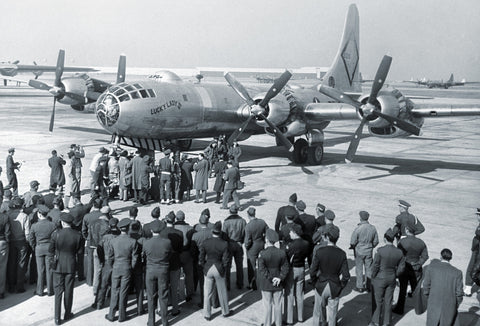
Seventy-Five Years Ago Lucky Lady II Became the First Plane to Circumnavigate the World Nonstop
Seventy-five years ago, as both the Cold War and aviation technology were ramping up, the newly formed United States Air Force wanted to show the world the reach of its air arsenal. The recent development of functional mid-air refueling techniques by the British allowed Strategic Air Command’s commander General Curtis LeMay to demonstrate to both friends and foes that long-haul bombing missions of almost unlimited length and duration were now possible.
On February 26, 1949, Lucky Lady II , a SAC B-50A bomber commanded by Captain James Gallagher, took off from Carswell Air Force Base in Fort Worth, Texas, in an attempt to become the first airplane to fly nonstop around the world. Gallagher’s expanded crew of 14 included three pilots who rotated in four- to six-hour shifts, while an extra fuel tank located in the bomb bay increased the airplane’s range.
Four mid-air refuelings from KB-29M tankers—over the Azores, Saudi Arabia, the Philippines and Hawaii—allowed Lucky Lady II to stay aloft for 23,452 miles over 94 hours and one minute before returning to Carswell on March 2. The day after Lucky Lady II landed, the New York Times commented, “Wings have brought us far since Magellan’s ship Vittoria took about 1,000 days to make the first circumnavigation in 1519-22.” (That was four days for Lucky Lady II versus two years and nine months for Magellan.) Gallagher and his crew were each awarded the Distinguished Flying Cross and the flight won that year’s Mackay Trophy.
Heady days indeed—but there was a cost. Overshadowed amid the celebration was the fact that the third refueling tanker had encountered storms on its return route and had crashed over the Philippines on March 1. All nine servicemen aboard lost their lives.
Soon after its record-breaking flight, Lucky Lady II suffered serious damage in a belly landing and was dismantled. By the late 1960s, the surviving fuselage had made its way to the Planes of Fame Museum in Chino, California, which still displays this singular piece of aviation history.
